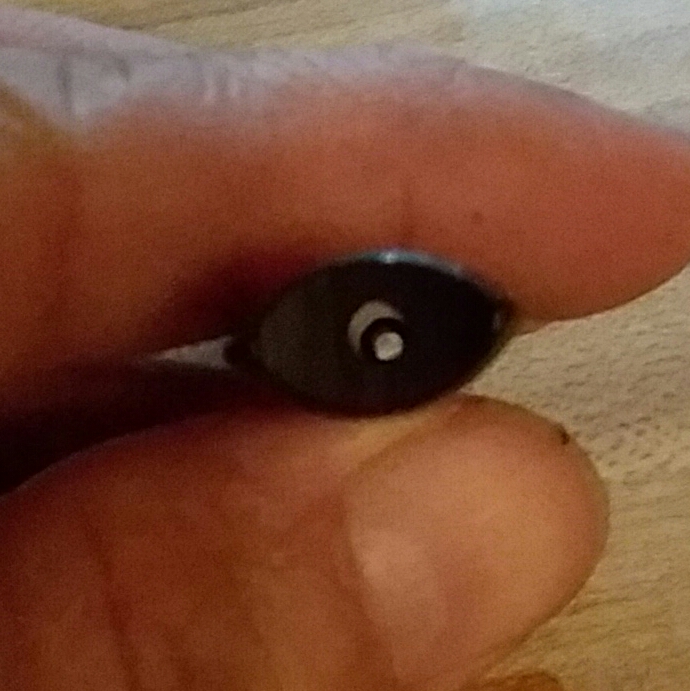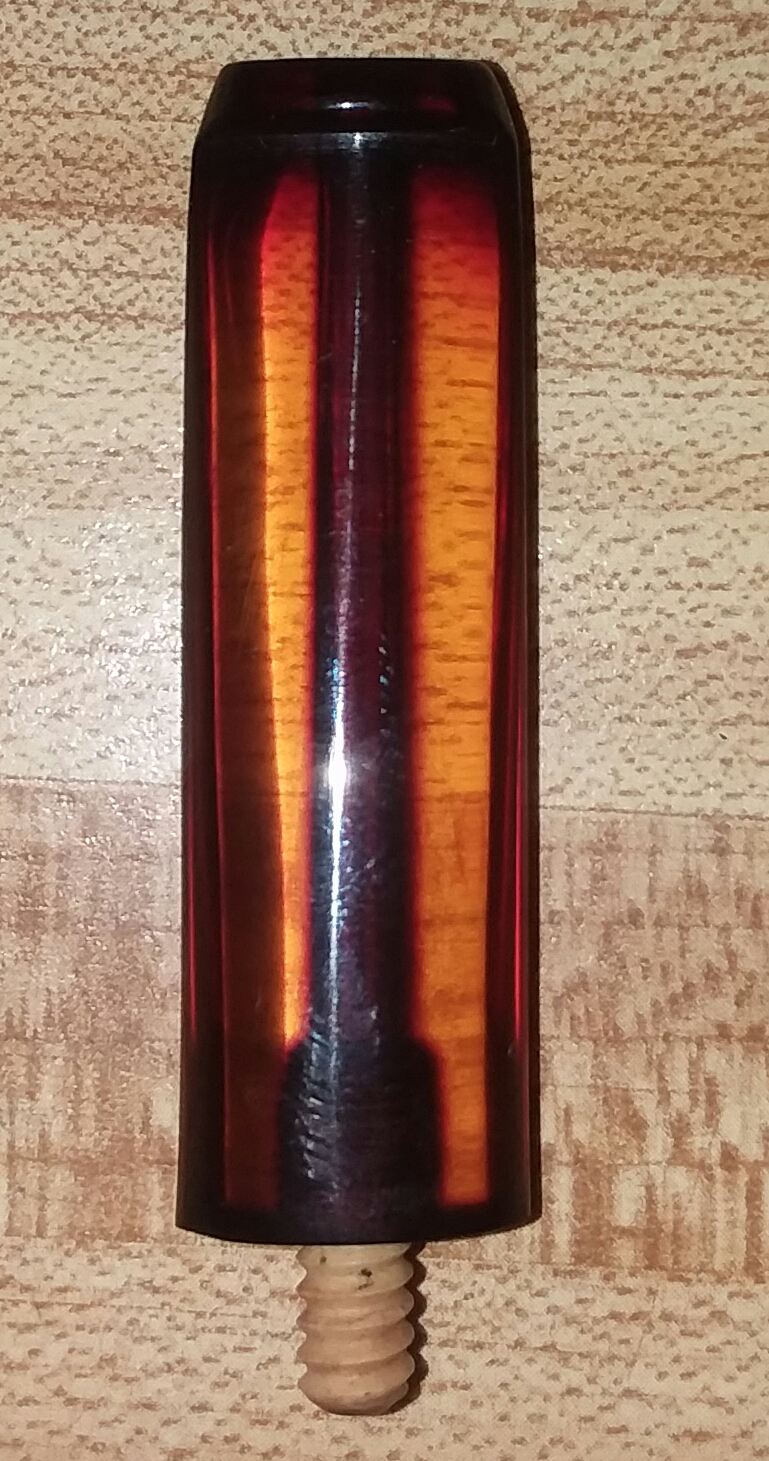|
|
Post by slowroll on Nov 19, 2018 16:12:56 GMT -5
Here’s a little (maybe not so little) tutorial on what correct airflow thru the stem should be. There’s a fair amount of discussion among pipers about what constitutes proper airflow thru the stem and out the slot, and more than a little not so accurate info given and demonstrated on Youtube. So I thought I would show you all some test results and drawings I’ve done in the course of my research efforts in order to build a decent pipe. After all, if the smoke stream isn’t smooth and evenly distributed, it contributes to bite. the first pic shows what proper the proper smoke stream should look like, as you might expect. Nice flat stream across the whole slot the second pic shows what incorrect airflow looks like. A narrow diameter cylindrical stream, – can contribute to bite. the narrow cylindrical flow happens with most P-lips (the Sav square slot works better), and from slots cut like the third pic. As you can see, it’s just a semicircular cut in the button meeting the drilling. the transition from straight drilling and slot is too short to allow the airflow to conform to the slot. Regrettably, a lot of factory pipes are made this way. It’s a bum fabrication shortcut. the fourth and fifth pics show what a proper slot should look like on the inside. the fifth pic, a”U” shaped slot, is shows a slot type where a lot of well meaning misinformation is put forth. There are guys on you tube going to great lengths showing how to determine if that’s the slot type in your pipe by probing it with a wire, then telling you to carefully file out the slot so it’s more of a “V”, like pic 4. Turns out, that’s unnecessary work. I’ve tested a bunch of stems made like that and the airflow looks correct as in pic 1. The key is that the “U” needs to be deep enough. It’s also possible to make the situation worse by trying to file it out, because it’s easy to file to deeply and run the slot into the wider section of the draft drilling. If the draft hole is too wide a diameter all the way to the slot, the situation of pic 2 can result, along with too free a draw. Turns out there’s a quirk of fluidics that makes a wide draft with attendant constant slower airflow {Bernoulli’s theorem and all that) not follow the transition to the slot, and stay cylindrical. the airflow like to be accelerated thru a short narrow diameter transition just ahead of the slot. Of, course, the transition from the wider diameter draft hole to the narrow diameter show be a tapered drilling, or the turbulence can cause the problem of pic 2 also. It’s easy to check if it’s a problem case, just pull out the stem and slowly blow smoke thru the tenon end and look at the airflow out the button. Hope this helps you determine just what you might to do or have done to improve your pipe, and just as importantly, what not to bother with. Pic 1 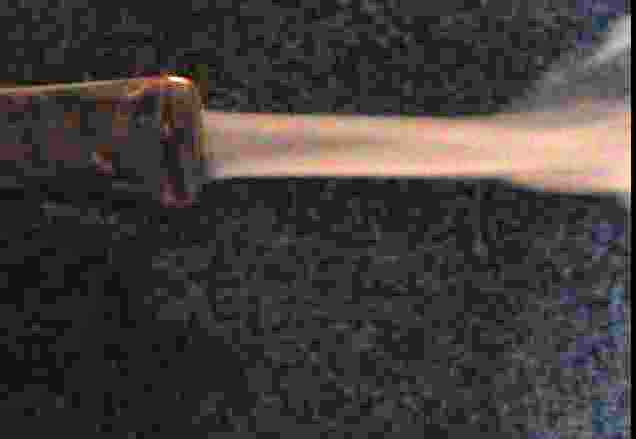 Pic 2 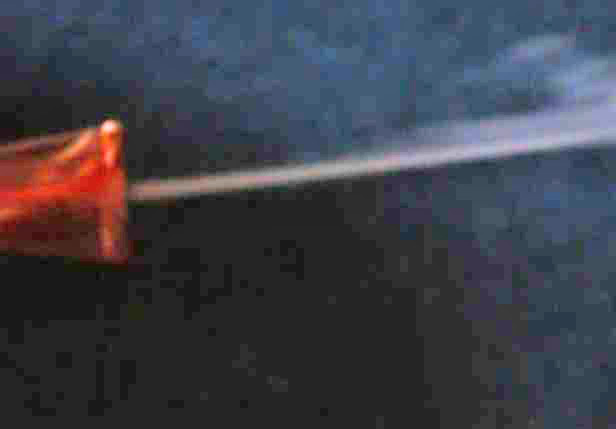 Pic 3 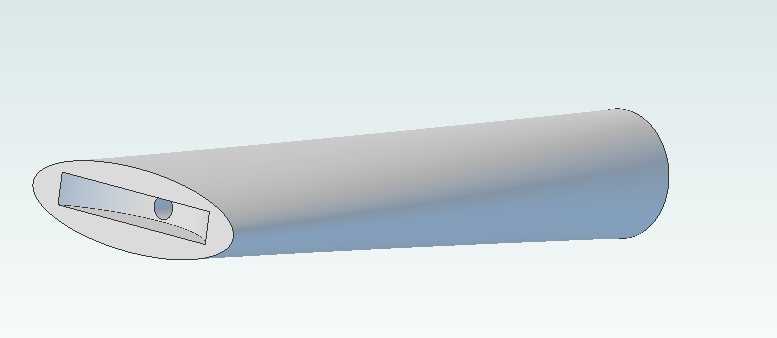 Pic 4  Pic 5 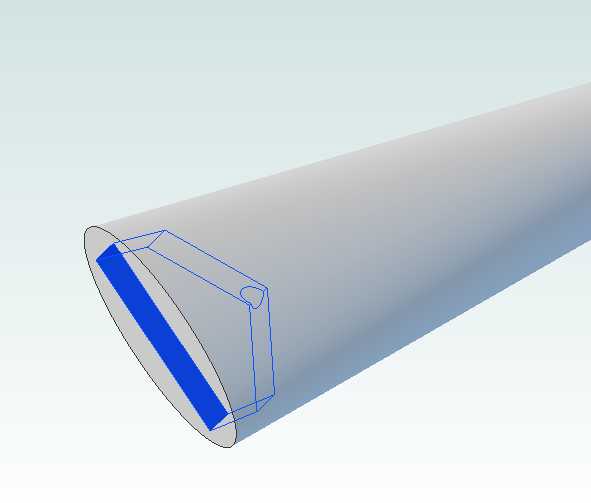 |
|
|
|
Post by McWiggins on Nov 19, 2018 16:24:48 GMT -5
This is some great information!
Thank you!
|
|
|
|
Post by dervis on Nov 19, 2018 16:38:24 GMT -5
Wow. This is pretty great. I've never paid much attention to this. Fantastic presentation!
|
|
|
|
Post by kxg on Nov 19, 2018 16:43:23 GMT -5
As with many things, there is a method to the madness; some real science and engineering applied to the problem. And as with many things, the “common sense”often applied to the problem, while common, is incorrect. Physics matters.
Thanks for some great information from a fact based approach!
|
|
|
|
Post by pepesdad1 on Nov 19, 2018 17:51:38 GMT -5
As with many things, there is a method to the madness; some real science and engineering applied to the problem. And as with many things, the “common sense”often applied to the problem, while common, is incorrect. Physics matters.Thanks for some great information from a fact based approach! Thank you for this well explained issue. |
|
|
|
Post by Legend Lover on Nov 19, 2018 18:14:23 GMT -5
Fantastic. Thank you for taking the time to put this together.
|
|
|
|
Post by pepesdad1 on Nov 19, 2018 19:38:24 GMT -5
Take the word of a man who knows...and who knows better than a man who knows fluid/air dynamics...his life depends on it.
|
|
Deleted
Deleted Member
Posts: 0
Location:
|
Post by Deleted on Nov 19, 2018 19:51:35 GMT -5
Excellent explanation, Steve. Thanks.
|
|
|
|
Post by roadsdiverged on Nov 19, 2018 20:11:11 GMT -5
Good information. I like reading stuff and knowing I just learned something.
Thank you sir.
|
|
Deleted
Deleted Member
Posts: 0
Location:
|
Post by Deleted on Nov 19, 2018 20:19:24 GMT -5
Very useful and interesting reading Steve. Thanks for posting, incorporates engineering, principle and physics.
|
|
|
|
Post by smellthehatfirst on Nov 20, 2018 0:07:39 GMT -5
How did you create the shots with the smoke stream?
|
|
desolbones
Junior Member
 
Posts: 410  First Name: Greg
Favorite Pipe: Briar, Clay,Cob, Meer, Metal and Morta.
Favorite Tobacco: Searching
Location:
First Name: Greg
Favorite Pipe: Briar, Clay,Cob, Meer, Metal and Morta.
Favorite Tobacco: Searching
Location:
|
Post by desolbones on Nov 20, 2018 8:13:17 GMT -5
Thanks Steve, makes me think stress risers could be a mixed blessing? In pic #5 would the angles (appear to be near 60 deg) cause a low pressure side that would help disperse the flow across the slot width? I'm trying to understand what you're showing.
|
|
|
|
Post by slowroll on Nov 20, 2018 9:20:44 GMT -5
How did you create the shots with the smoke stream? Used a Canon video DSLR on a tripod. Taped the stem to cardboard, connected a latex tube to the tenon and blew smoke through it. Took a video then took a screen shot of a video frame. |
|
|
|
Post by slowroll on Nov 20, 2018 9:28:10 GMT -5
Thanks Steve, makes me think stress risers could be a mixed blessing? In pic #5 would the angles (appear to be near 60 deg) cause a low pressure side that would help disperse the flow across the slot width? I'm trying to understand what you're showing. Greg, the inside angles tend to vary depending on who made stem, also the depth of the straight bit before the angles. Not really any stress risers, most of the stems like this are molded, and the corners pretty rounded. The depth and angle produce a low pressure side . |
|
piffyr
Junior Member
 
Posts: 422  First Name: Anthony
Favorite Pipe: The one I'm smoking right now.
Favorite Tobacco: Revor Plug
Location:
First Name: Anthony
Favorite Pipe: The one I'm smoking right now.
Favorite Tobacco: Revor Plug
Location:
|
Post by piffyr on Nov 20, 2018 9:38:52 GMT -5
Really nice explanation and illustrations, Steve.
I've been curious about how much the speed of the airflow effects (or doesn't) the functionality of the slot. Slow, gentle sippers vs. big draw puffers. Any thoughts on that?
|
|
|
|
Post by slowroll on Nov 20, 2018 13:22:31 GMT -5
Really nice explanation and illustrations, Steve. I've been curious about how much the speed of the airflow effects (or doesn't) the functionality of the slot. Slow, gentle sippers vs. big draw puffers. Any thoughts on that? I find that a "V" or a deep "U" have a pretty wide airflow velocity tolerance, probably well within the relatively small velocity difference between a sip and a good puff. A shallow slot seems to have a low tolerance, needs very low velocity to function at all. The really shallow slots, as in pic 3 never work. I think this all makes sense when one considers that air and smoke have inertia. And turbulence enters into it when the draft hole is a wider diameter than the top to bottom distance of the slot. The sharp edges at the top and bottom cause turbulence preventing the smoke from following the slot and dispersing. |
|
|
|
Post by Cramptholomew on Nov 20, 2018 14:09:50 GMT -5
|
|
piffyr
Junior Member
 
Posts: 422  First Name: Anthony
Favorite Pipe: The one I'm smoking right now.
Favorite Tobacco: Revor Plug
Location:
First Name: Anthony
Favorite Pipe: The one I'm smoking right now.
Favorite Tobacco: Revor Plug
Location:
|
Post by piffyr on Nov 20, 2018 14:58:14 GMT -5
I find that a "V" or a deep "U" have a pretty wide airflow velocity tolerance, probably well within the relatively small velocity difference between a sip and a good puff. A shallow slot seems to have a low tolerance, needs very low velocity to function at all. The really shallow slots, as in pic 3 never work. I think this all makes sense when one considers that air and smoke have inertia. And turbulence enters into it when the draft hole is a wider diameter than the top to bottom distance of the slot. The sharp edges at the top and bottom cause turbulence preventing the smoke from following the slot and dispersing. Good to know. I figured out a while back that the depth of the funnel has a lot of impact on the "smokeability" of the pipe, but I've still wondered whether the "strength" of the draw, and therefore, velocity of the airflow might have just as much impact on the experience. I mean, some guys get on fine with pipes that others can't abide. Brakner's stems, for example, tend to have a slot design very close to figure 3 (maybe just a bit deeper), but many people love them. I have a few pre-war pipes with no slot at all, just a circular exit at the end of the stem. I enjoy them just fine without any burn, but I'm sure that I'm unconsciously compensating in some manner, maybe with a lighter draw. |
|
|
|
Post by slowroll on Nov 20, 2018 15:26:20 GMT -5
piffyr , well, we're all different, some are less sensitive to the issue. I find it makes a difference for me.
|
|
piffyr
Junior Member
 
Posts: 422  First Name: Anthony
Favorite Pipe: The one I'm smoking right now.
Favorite Tobacco: Revor Plug
Location:
First Name: Anthony
Favorite Pipe: The one I'm smoking right now.
Favorite Tobacco: Revor Plug
Location:
|
Post by piffyr on Nov 20, 2018 15:51:19 GMT -5
piffyr , well, we're all different, some are less sensitive to the issue. I find it makes a difference for me. I think you maybe misunderstand, Steve. I'm not arguing with your evidence. Of course, it makes a difference! All I'm saying is that there are other variables at play during the experience and I'm wondering whether the strength of the draw can have as much influence as the shape of the funnel. |
|
|
|
Post by slowroll on Nov 20, 2018 16:49:25 GMT -5
piffyr , well, we're all different, some are less sensitive to the issue. I find it makes a difference for me. I think you maybe misunderstand, Steve. I'm not arguing with your evidence. Of course, it makes a difference! All I'm saying is that there are other variables at play during the experience and I'm wondering whether the strength of the draw can have as much influence as the shape of the funnel. Oh no, I didn't infer thst you were disagreeing, I was just replying that some will be sensitive, some won't. To your specific question, I suppose that strength of draw might have an effect on the result for some. Some pipers not sensitive to smoke concentration may not care if the smoke stem is circular or dispersed. Those folks like straight virginias!  |
|
piffyr
Junior Member
 
Posts: 422  First Name: Anthony
Favorite Pipe: The one I'm smoking right now.
Favorite Tobacco: Revor Plug
Location:
First Name: Anthony
Favorite Pipe: The one I'm smoking right now.
Favorite Tobacco: Revor Plug
Location:
|
Post by piffyr on Nov 21, 2018 0:25:23 GMT -5
Those folks like straight virginias!  Yeah, that sounds like me.  |
|
|
|
Post by antb on Nov 21, 2018 6:07:09 GMT -5
Thanks for this, Steve!
|
|
|
|
Post by Pistol Pete 1911 on Nov 22, 2018 20:41:06 GMT -5
Awesome post Steve, I had absolutely no Idea
|
|
chasingembers
Senior Member
   
Posts: 1,909  First Name: Duane
Favorite Pipe: My Growing J. Everett Collection, Fifteen Day Bruce Weaver Set, Meerschaums, Oguz Simsek Skulls
Favorite Tobacco: Black Frigate,Solani Silver Flake, Yenidje Highlander, Angler's Dream, Watch City Slices, Salty Dogs, Mephisto, Ennerdale Flake, Rich Dark Honeydew, 1792 Flake
Location:
First Name: Duane
Favorite Pipe: My Growing J. Everett Collection, Fifteen Day Bruce Weaver Set, Meerschaums, Oguz Simsek Skulls
Favorite Tobacco: Black Frigate,Solani Silver Flake, Yenidje Highlander, Angler's Dream, Watch City Slices, Salty Dogs, Mephisto, Ennerdale Flake, Rich Dark Honeydew, 1792 Flake
Location:
|
Post by chasingembers on Nov 26, 2018 4:02:52 GMT -5
|
|
chasingembers
Senior Member
   
Posts: 1,909  First Name: Duane
Favorite Pipe: My Growing J. Everett Collection, Fifteen Day Bruce Weaver Set, Meerschaums, Oguz Simsek Skulls
Favorite Tobacco: Black Frigate,Solani Silver Flake, Yenidje Highlander, Angler's Dream, Watch City Slices, Salty Dogs, Mephisto, Ennerdale Flake, Rich Dark Honeydew, 1792 Flake
Location:
First Name: Duane
Favorite Pipe: My Growing J. Everett Collection, Fifteen Day Bruce Weaver Set, Meerschaums, Oguz Simsek Skulls
Favorite Tobacco: Black Frigate,Solani Silver Flake, Yenidje Highlander, Angler's Dream, Watch City Slices, Salty Dogs, Mephisto, Ennerdale Flake, Rich Dark Honeydew, 1792 Flake
Location:
|
Post by chasingembers on Nov 26, 2018 4:05:50 GMT -5
Chamfering the tenon is another fix carvers use to affect the airflow going into the stem.
|
|
|
|
Post by Legend Lover on Nov 26, 2018 11:18:59 GMT -5
I had to look up the definition of chamfering. I'm learning loads in this thread.
|
|
|
|
Post by slowroll on Nov 26, 2018 11:40:40 GMT -5
Chamfering the tenon is another fix carvers use to affect the airflow going into the stem. Quite right. I do that always. But, it primarily helps minimize condensation at the stem/shank junction if there is a bit of misalignment or differing diameters. Doesn't do anything for the exit of the smoke at the button end. |
|
chasingembers
Senior Member
   
Posts: 1,909  First Name: Duane
Favorite Pipe: My Growing J. Everett Collection, Fifteen Day Bruce Weaver Set, Meerschaums, Oguz Simsek Skulls
Favorite Tobacco: Black Frigate,Solani Silver Flake, Yenidje Highlander, Angler's Dream, Watch City Slices, Salty Dogs, Mephisto, Ennerdale Flake, Rich Dark Honeydew, 1792 Flake
Location:
First Name: Duane
Favorite Pipe: My Growing J. Everett Collection, Fifteen Day Bruce Weaver Set, Meerschaums, Oguz Simsek Skulls
Favorite Tobacco: Black Frigate,Solani Silver Flake, Yenidje Highlander, Angler's Dream, Watch City Slices, Salty Dogs, Mephisto, Ennerdale Flake, Rich Dark Honeydew, 1792 Flake
Location:
|
Post by chasingembers on Nov 26, 2018 14:15:10 GMT -5
Chamfering the tenon is another fix carvers use to affect the airflow going into the stem. Quite right. I do that always. But, it primarily helps minimize condensation at the stem/shank junction if there is a bit of misalignment or differing diameters. Doesn't do anything for the exit of the smoke at the button end. By reducing flow resistance at the beginning of the stem it is still increasing the volume of smoke by reducing the surface area the smoke has to travel across to exit the stem. |
|
|
|
Post by Cramptholomew on Nov 26, 2018 14:31:39 GMT -5
Aaaah, what about a twin-bore? I imagine it might work similarly to a V notch? Or, is it just a gimmick? I've read things in both camps.
|
|


























